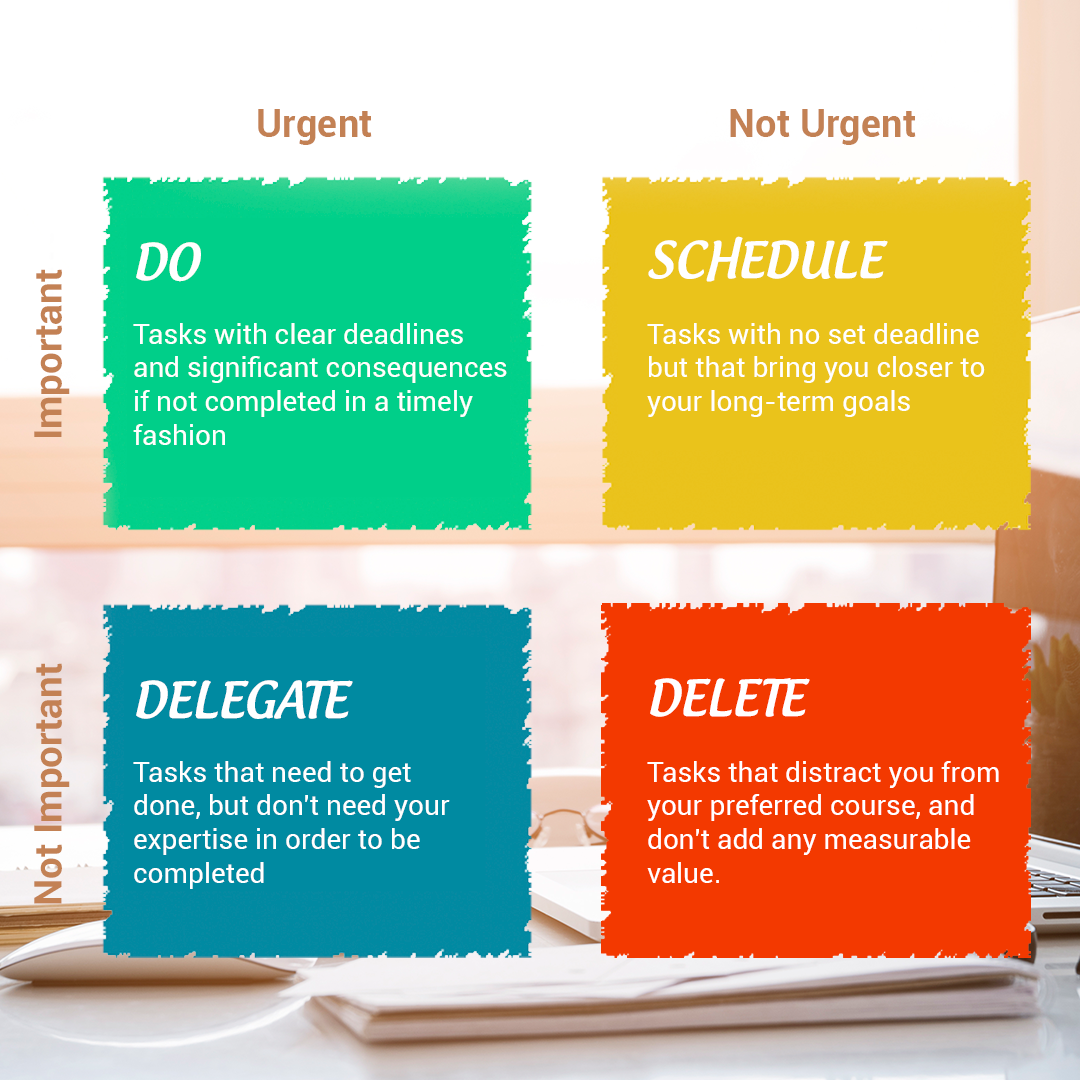One of the most crucial skills for both life and work is time management. Since there are only 24 hours in a day for each person, we must all learn to maximize our productivity. One of the most well-liked and accessible tools for planning and managing your work and life is the EISENHOWER Matrix.
What is EISENHOWER’s matrix?
People that have many goals can use the Eisenhower Matrix as a potent time management tool. Although they constantly feel as though they are “short of time”, they find it difficult to finish things. With Eisenhower, you’ll discover how to reassess your priorities and discover how to concentrate on the things that are more significant than the artificial urgency. Never again you’ll have to strain yourself dealing with a mess again.
*Dwight D. Eisenhower was the 34th President of the United States, as well as the President of Columbia University and the first Supreme Commander of NATO. He researched this matrix to assist him in balancing life and work and scheduling time for his life goals.
Corner 1 – Important and Urgent
These are tasks that must be done by a certain date that directly affect your life.
- Unpredicted moments: Important projects, urgent meetings, client disputes, business emails, car troubles, etc.
- Estimate the time of the event: Birthday, a company anniversary, a wedding…
- Backlogs due to procrastination: Schedule sending work reports and creating presentations,…
It is imperative that you finish these activities as quickly as you can. To keep things under control and stay in control, you can plan to do it every day, by week, or by month. You must complete these things immediately and not put them off.
Corner 2 – Important but not urgent
This is the “area” where tasks that are significant but not urgently necessary are kept because they frequently take a while to finish. Examples include studying foreign languages, expanding one’s professional knowledge, reading novels, exercising,… These are typically the most important tasks that will significantly affect your long-term objectives.
You must thus make plans and commit completely to the timeline.
Corner 3 – Not important but urgent
These are unimportant yet sudden and urgent activities like: coffee meetups with close friends, phone calls from family, laundry, dishwashing, chores, etc… You can and should handle these things right away. These could be activities like typing a document or completing an excel sheet that are unrelated to your technical expertise. You can “authorize” individuals to carry out these tasks on your behalf.
In addition, you should practice saying “no” to requests that are unnecessary, especially those that consume a significant amount of your time.
Corner 4 – Not important and urgent
These activities, which almost seem “nonsense” only have detrimental effects and keep us preoccupied by causing us to check our emails, converse excessively, and browse social media. All the activities that occupy your time but don’t provide any value and could even be harmful.
Eliminate or restrict these as much as you can to save up time for other priorities. Take care of your vital responsibilities first, and while you still have time, enjoy yourself. Otherwise, you will put off doing other crucial duties and procrastinate more.
Conclusion
When you feel overworked and overwhelmed, that’s the time to prioritize your responsibilities and assess your productivity. Time is a valuable resource that is shared equally by all. Apply the aforementioned strategy to managing your work-life balance.








No comment